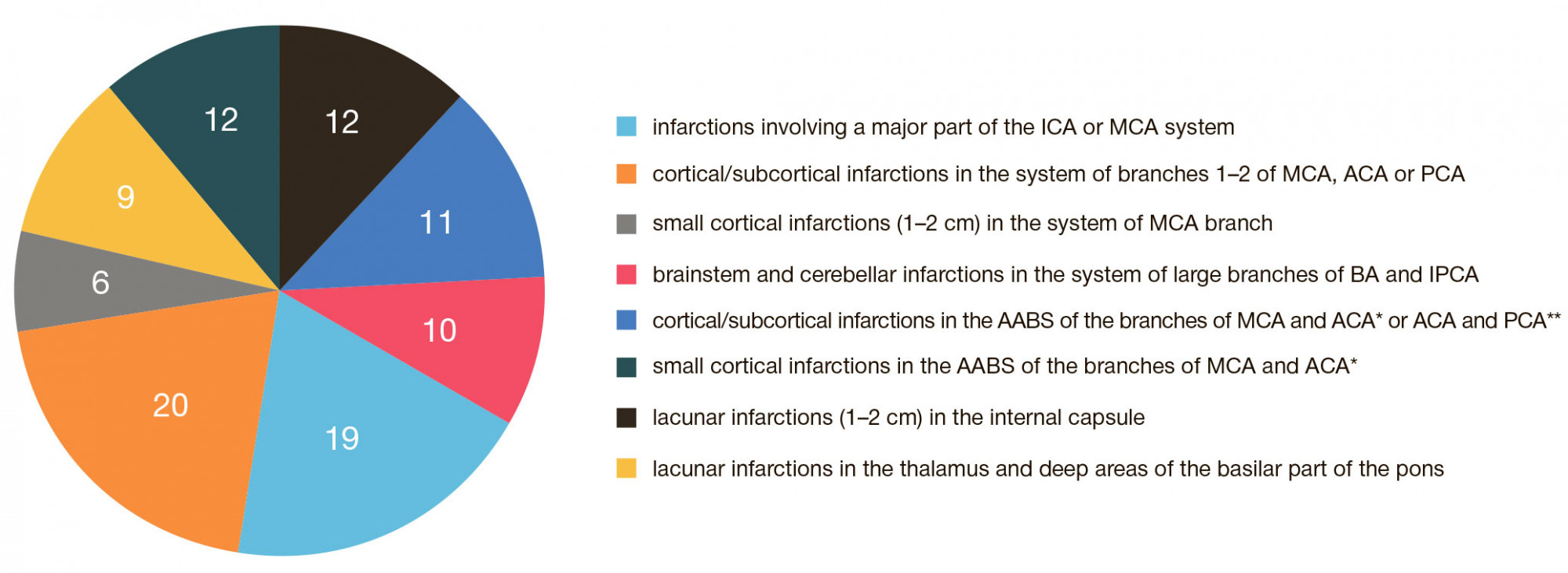
This article is an open access article distributed under the terms and conditions of the Creative Commons Attribution license (CC BY).
ORIGINAL RESEARCH
Contemporary approach to diagnosis of ischemic stroke pathogenetic variants in patients with atherosclerosis and arterial hypertension
Research Center of Neurology, Moscow, Russia
Correspondence should be addressed: Pavel L. Anufriev
Volokolamskoye shosse, 80, Moscow, 125367; ur.ygoloruen@veirfuna
Funding: the study was carried out as part of the public contract “Acute Vascular and Nonvascular Cerebral Lesions: Pathogenetic, Diagnostic and Therapeutic Aspects”, state registration no. АААА-А20-120110390021-4.
Author contribution: Anufriev PL – data analysis and statistical processing, manuscript writing; Tanashjan MM, Gulevskaja TS – study design, data analysis, manuscript editing.
Compliance with ethical standards: the study was approved by the Ethics Committee of the Research Center of Neurology (protocol № 11/14 dated November 19, 2014).



